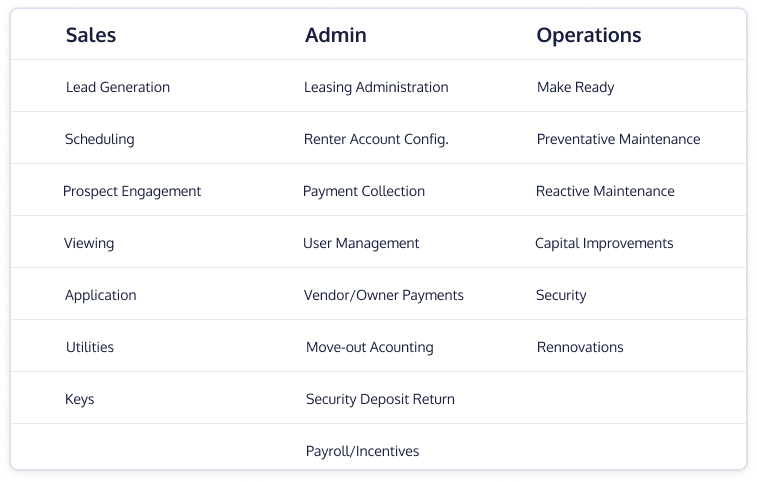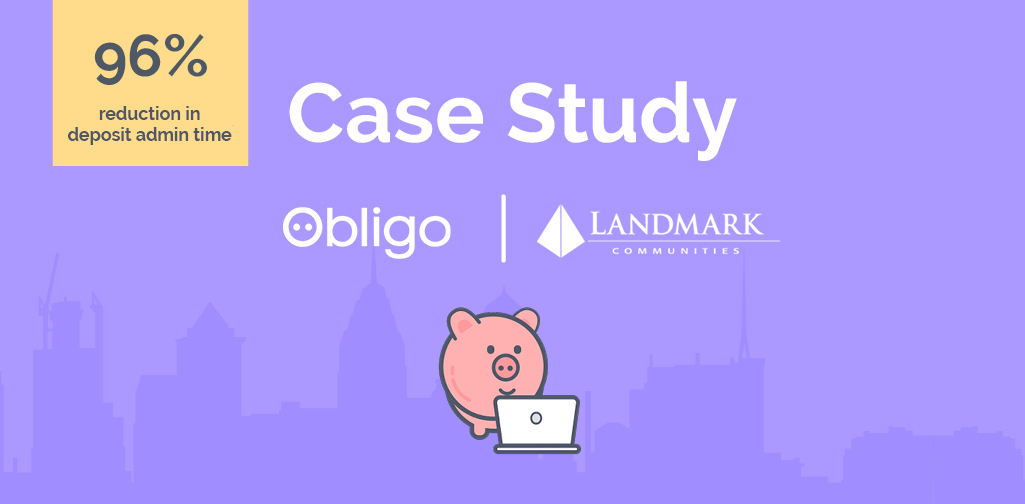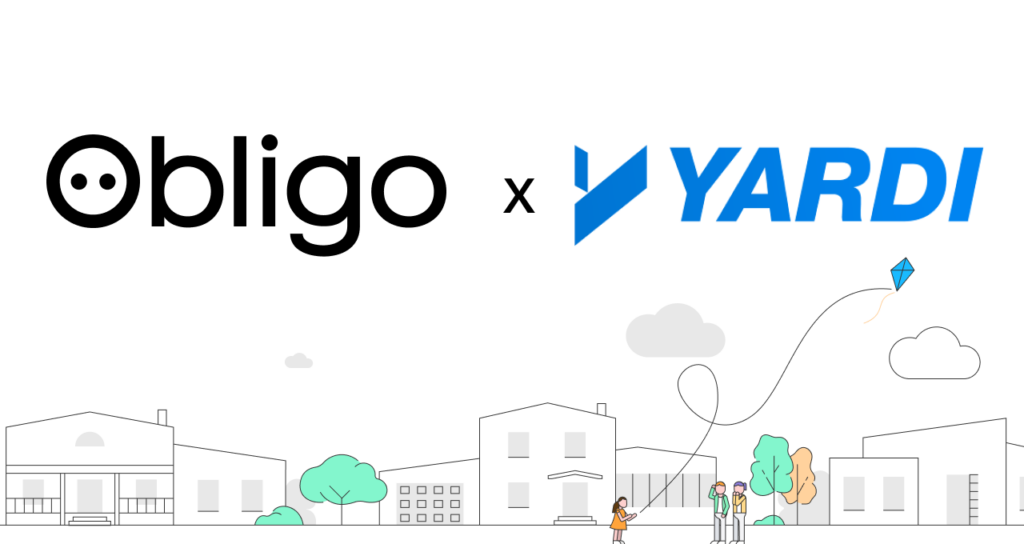With 15 years of experience in property management under my belt, I’ve come to learn that optimizing your tech stack is crucial for successfully and sustainably growing your portfolio. Before I joined Obligo, my previous company grew from 1,500 units to over 4,000 units, and in that time, we evaluated hundreds of tech solutions and implemented dozens and dozens.
This blog aims to provide you with the practical framework I’ve relied on to evaluate and prioritize tech improvements to various leasing, administrative, and operations processes.
A Three-Step Process Improvement Guide
Step 1: Identify Your Pain Points
Think about your current processes in the different functional areas of property management and ask yourself:
– Are there any areas where you are consistently underperforming for your owners, residents, or employees?
– Are there any tasks where successful completion is dependent on the availability/willingness of a single individual?
Below is a table that includes some of the large and small areas where you might find an opportunity for process improvement. Look for low-hanging fruit, quick and easy wins that can have a substantial impact on your operation:

Talk to your leasing, accounting, and maintenance teams about their daily experiences and any processes they find challenging or inefficient. It’s also important to consider feedback from the outside – vendors and, crucially, tenant feedback – is just as important.
Step 2: Align Internally
In the quest for organizational improvement, it’s crucial to adopt a strategy that encompasses collaboration, evaluation, visualization, prioritization, and knowledge capture. Engaging key players who are directly impacted by potential changes is a foundational step. This could mean consulting staff accountants on financial reforms or tenants on leasing adjustments, as their insights are invaluable and you may ultimately need their buy-in and support for an effective implementation. It is also important to take inventory of your current practices to find opportunities to eliminate unnecessary steps and identify the must-keep processes that already set you apart in the property management space.
An example of what this thought process might look like if you’re evaluating security deposit alternatives:

Also take a moment to assess the tools and capabilities already at your disposal. Often, making minor adjustments to existing resources, such as leveraging features of your property management software (PMS), can effectively meet your challenges without the need for additional investments. Shameless plug: Obligo’s solution is seamlessly integrated within Appfolio and Buildium, which allows you to start offering deposit-free living immediately within your existing workflows.
Visualizing the process through maps can significantly enhance this evaluation, making it easier to spot redundancies, bottlenecks, or missing steps. Furthermore, capturing the unique insights of internal and external stakeholders and documenting this knowledge is vital for ensuring continuity and spreading invaluable expertise across the organization.
Step 3: Evaluating the Tech Vendor
At this stage, you should have your needs clearly defined with a comprehensive list that details both essential features and desired enhancements, distinguishing between critical requirements and beneficial extras.
Turn this list into an evaluation scorecard to help maintain consistent assessments across potential vendors, rating them based on how well they meet your defined needs and prioritizing the elements that are most crucial to your operations, thus facilitating objective comparisons (or use our template here). Forming a review team with diverse perspectives—from accountants to leasing specialists and administrators—ensures a well-rounded evaluation process.
When on vendor calls and demos, ask every and any question you can think of to test their understanding of your specific needs and explore the scope and adaptability of their product, especially in edge cases. Finally, seeking openness in partnership, particularly regarding the vendor’s operations and business model (which impacts pricing – whether you or your residents will be the one covering the cost), is essential to establishing a transparent and effective relationship. This holistic approach not only streamlines the selection process but also ensures that the chosen solution aligns closely with your organization’s unique requirements and goals.
The Road Ahead: Embracing Continuous Improvement
To build a successful property management business, both strategic process improvement and the adoption of cutting-edge technology are paramount. With tools like Obligo complementing established property management systems, managers can achieve greater efficiency and heightened tenant satisfaction.
In today’s property management industry, standing still is a sure way to fall behind. To succeed, you must constantly improve your processes and adopt innovative tools (like Obligo!) that work with your existing workflows and property management systems. By using such solutions, you can increase efficiency, improve tenant satisfaction, and stay ahead of the competition. If you fail to adapt and evolve, your business may decline as more tech-savvy competitors take your residents.
Interested in ridding yourself from the burden of security deposits? Get started today.





Leave a Reply